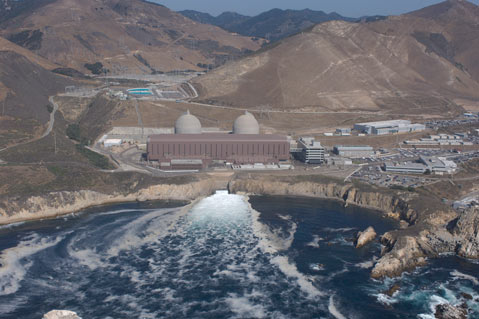Diablo’s in the Details
The Alliance for Nuclear Responsibility Challenges PG&E Seismic Report

The Alliance for Nuclear Responsibility has filed a challenge with the Public Utility Commission (PUC) to block payment to PG&E for a seismic study of the subsurface terrain off the coast from the Diablo Canyon nuclear power plant in Avila Beach, charging the utility company with violating the peer review process that was mandated.
Two weeks ago, PG&E released a 1,700-page report assessing the seismic threats posed by offshore faults discovered six years ago. The report concluded that the plant is built to withstand any ground motion the faults could possibly generate. Alliance attorney John Geesman charged that PG&E failed to provide an independent peer review committee a copy of the report until one day after the report was made public two weeks ago.
According to Geesman, the state law mandating the new seismic investigation required PG&E to share its results with the peer review committee on an ongoing basis, not after the fact. “Without independent review, this report is propaganda, not science,” Geesman stated. As such, he argued, PG&E should not be entitled to full compensation for the cost of preparing the report. The PUC had authorized PG&E to recoup $64 million from state ratepayers to cover the report’s costs. Of that, he said, all but $7 million has already been paid.
Geesman is arguing PG&E should only get half of the remaining amount. The alliance is by this action — admittedly a political stunt — hoping to embolden the peer review committee to take a hard look at the data underlying PG&E’s conclusion of Diablo’s seismic safety. The alliance has argued that the utility company and the Nuclear Regulatory Commission have both adopted new methodologies for reviewing this data that they insist is more risk tolerant. If the same data would be reviewed according to more traditional methodologies, alliance spokesperson David Weisman contended, the outcome could be different. He derided the new approach as “numerical voodoo of probabilistic risk assessment.”
PG&E spokesperson Blair Jones stressed that the results demonstrate the plant has been engineered to withstand the largest seismic jolt the newly discovered faults are capable of delivering. He also insisted that PG&E was never required to give the independent review panel draft reports but had initially agreed to do so. He added that the process proved more time-consuming than anticipated and that rather than feeding the panel information on a “piecemeal” basis, PG&E opted to deliver it in one big package.
The complaint filed by the alliance contains emails from PG&E officials expressing concern that members of the peer review committee might in fact seek to re-process the seismic data without understanding exactly how to interpret the information. In that case, they worried, the committee members might feel compelled to seek the expertise of contract consultants. PG&E’s Jones countered the alliance was “mistaken in this assertion,” adding that the utility company assumed the panel might seek outside help and included funding for that in its $64 million rate recovery plan.
San Luis Obispo County Supervisor Bruce Gibson — outspoken in his questions about the nuclear plant’s seismic risk — sits on the independent peer review committee, and he was much upset that the committee had no chance to see the report until it was a fait accompli. “It appears to me that PG&E’s public relations staff advised them to get their story to the public before any detailed questions might be asked,” Gibson contended. Jones said the utility “is looking forward” to the panel’s comments and “will respond to the comments received.”



